![How To Make/Create an Invitation in Google Docs [Templates + Examples]](https://images.template.net/wp-content/uploads/2023/07/How-To-Make_Create-an-Invitation-in-Google-Docs-Templates-Examples-788x443.png)
How To Make/Create an Invitation in Google Docs [Templates + Examples]
To formally invite someone or a group of people to an event or activity, you will need to send out…
Apr 24, 2024
No single logo size is appropriate for all circumstances; how you plan to use a logo is responsible for choosing the best logo size. The next time you create and design a logo using a logo maker website for your freelance business, company, agency, or product, you need to know the type of logo to use and the recommended size for it.
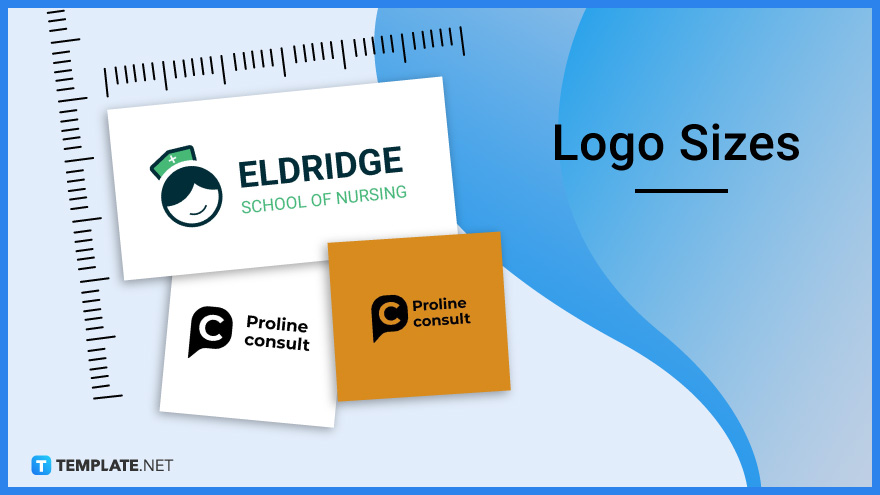
Standard websites for business, school, or any purpose follow the 250 x 100 px measurement for website logos.
Concoct an ideal mobile app logo through a mobile app icon that measures 864 x 864 px.
A staple marketing tool that displays your business is a business card, and you can insert logos into it that measure 0.75 x 0.75 px.
Banners attract a lot of attention due to their gargantuan size, and their logos are easy to spot with their 1800 x 200 px measurement.
Branding also plays out in product packaging and the product packaging logo is just as important; this type of logo measures around 1920 x 1020 px.
For whatever you display on a letterhead, don’t forget to insert logos with an average size of 300 x 120 px.
With T-shirt logos, make sure to consider the staple size according to adults (3.5 x 3.5 in) and children (3.3 x 3.3 in).
The standard billboard advertisement logo size is 27 x 40 in the US and 6.96 x 3.048 in the UK, but it can also depend on the billboard canvas size.
The traditional materials for enclosing letters and documents, envelopes, have a standard envelope logo size of 22.9 cm x 32.4 cm or the C4 size.
Facebook profile logos should be 170 x 170 pixels while the cover photo should be 820 x 312 pixels. The ideal file type for Facebook logos is PNG.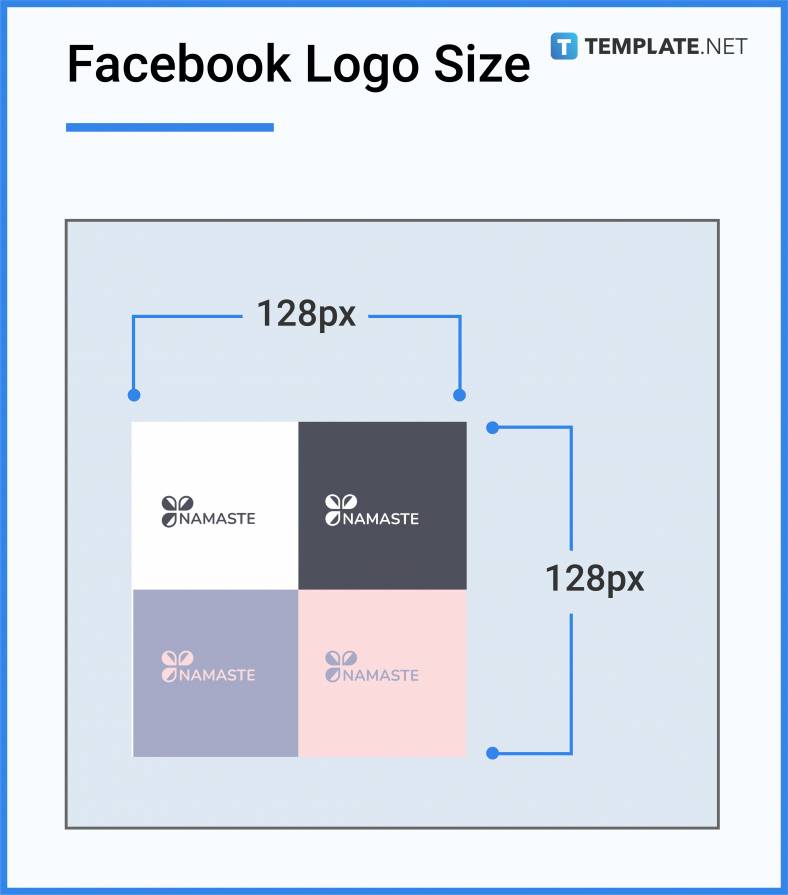
The recommended Twitter profile logo size is 400 x 400 pixels and 1500 x 500 pixels for header images. The ideal file type is PNG, JPG, or GIF while the maximum file size is 5 MB.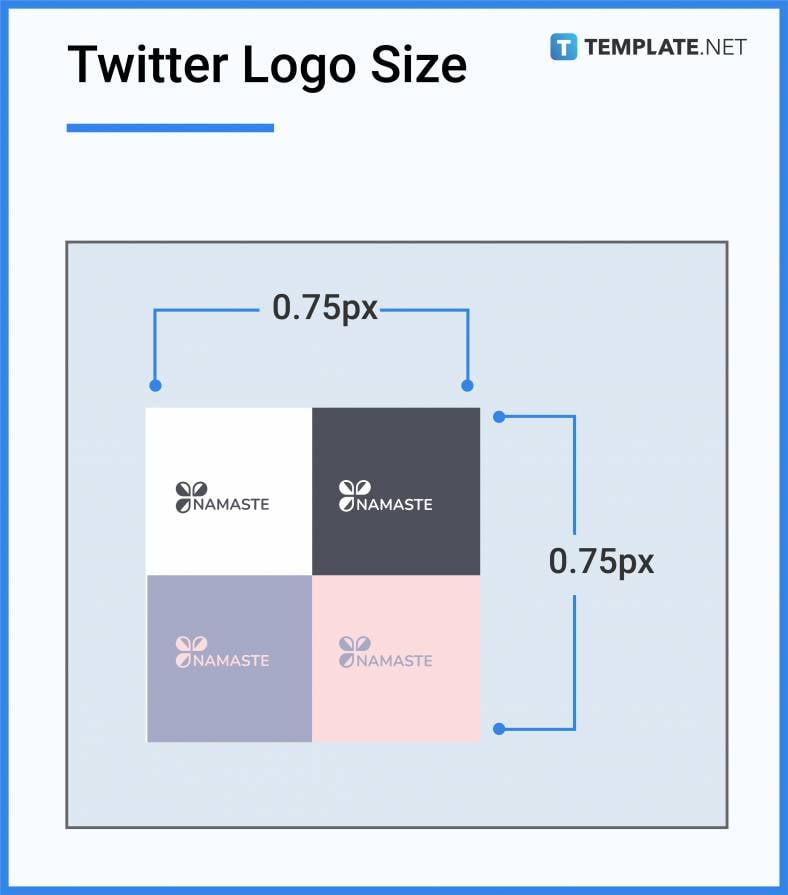
The suggested Instagram profile picture logo is 320 x 320 pixels for optimal viewing results on desktop and mobile. Ideally, JPG is the best image format especially when Instagram is known to convert every file into JPG.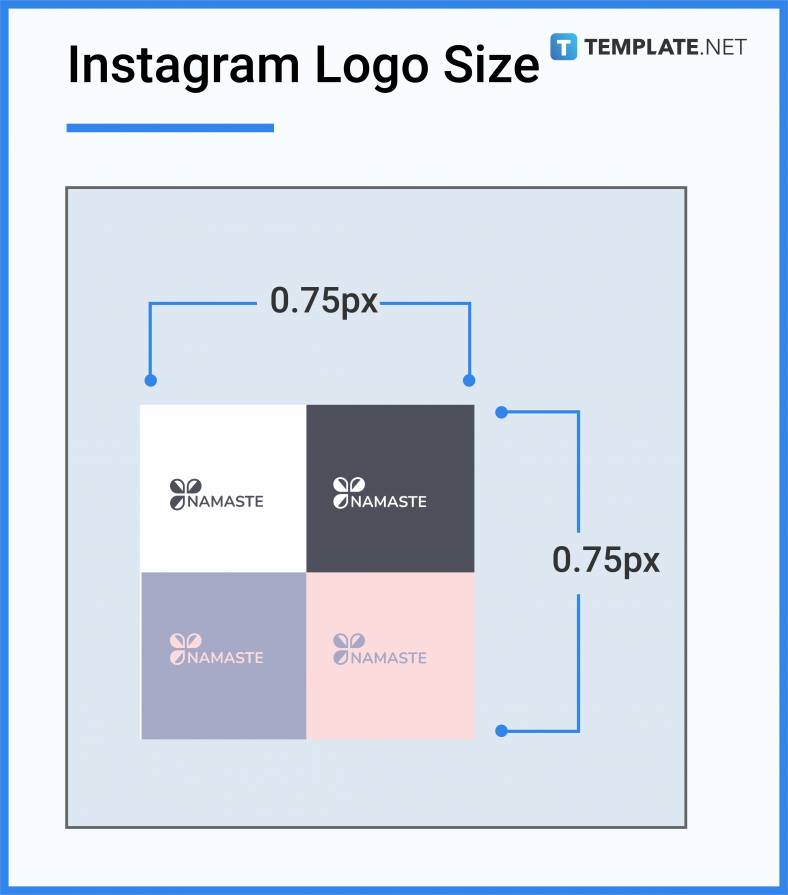
A LinkedIn company profile logo should be 400 x 400 pixels in dimension while the cover image is approximately 1128 x 191 pixels. The maximum file size is 10 MB and average file types include JPG, PNG, and GIF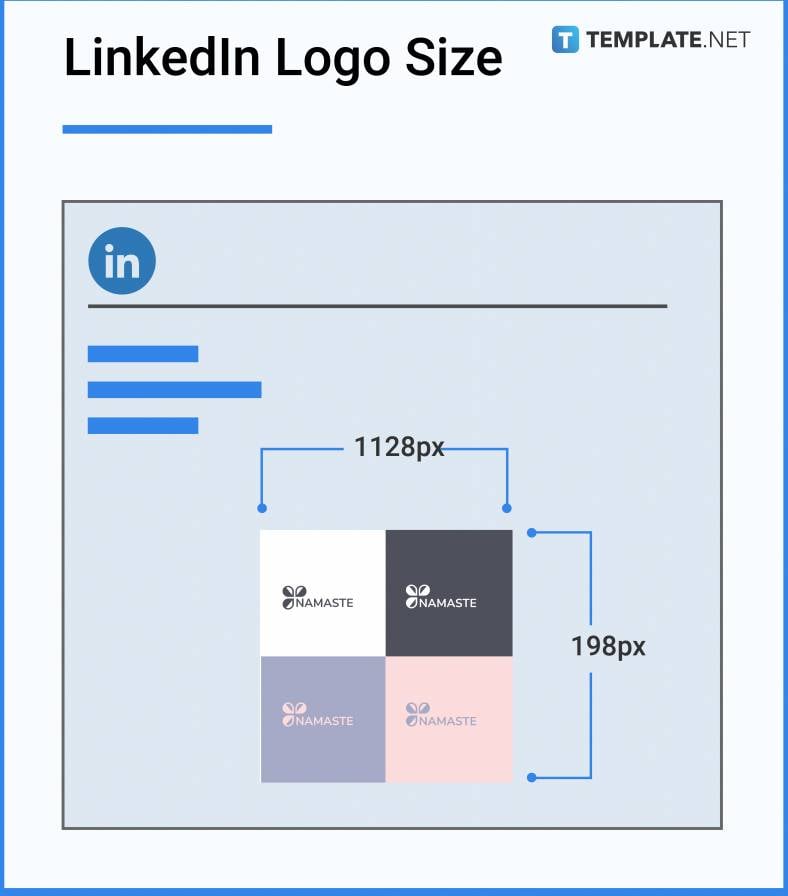 .
.
The appropriate size for YouTube channel icons and profile images is 800 x 800 pixels. And, YouTube accepts file types such as JPG, PNG, GIF, and BMP.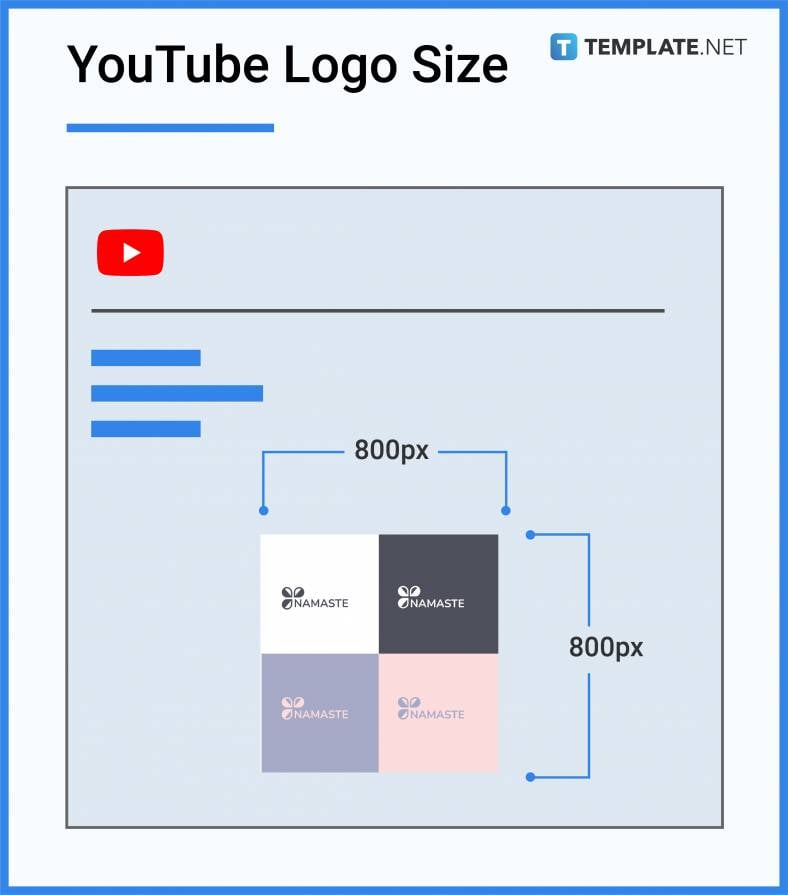
If you want to head to Twitch and create a logo for your account, the appropriate Twitch channel logo in profile picture size would be 1600 x 1600 px.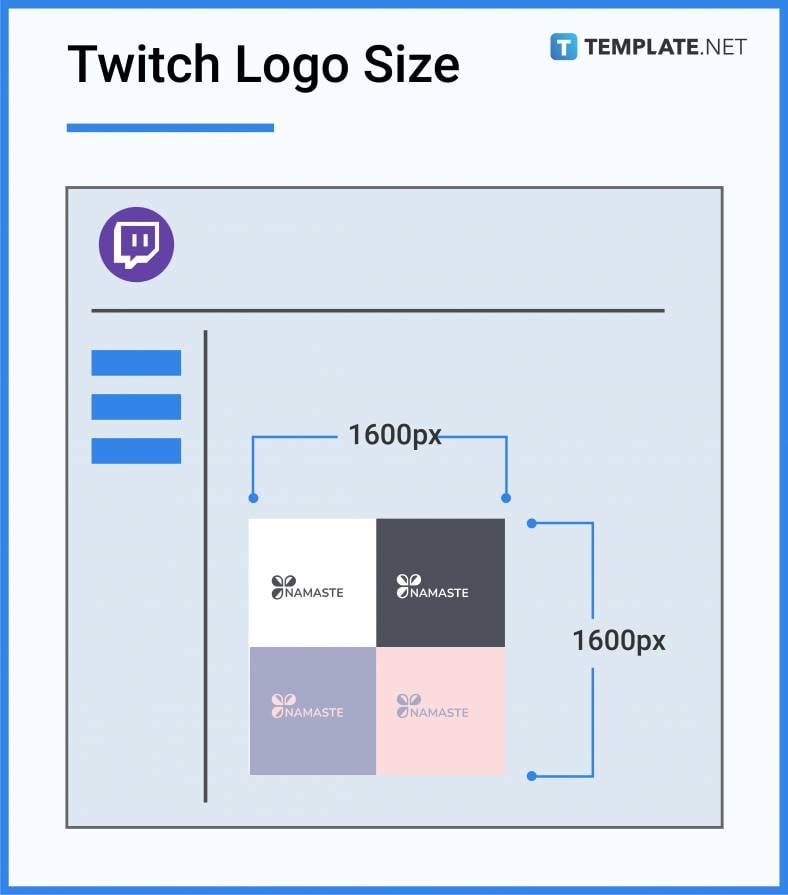
Upload a Discord logo in a profile picture size that measures around 128 x 128 px. The key is to follow the1:1 aspect ratio. File types covered here include JPG, PNG, and GIF with a maximum file size of 8 MB.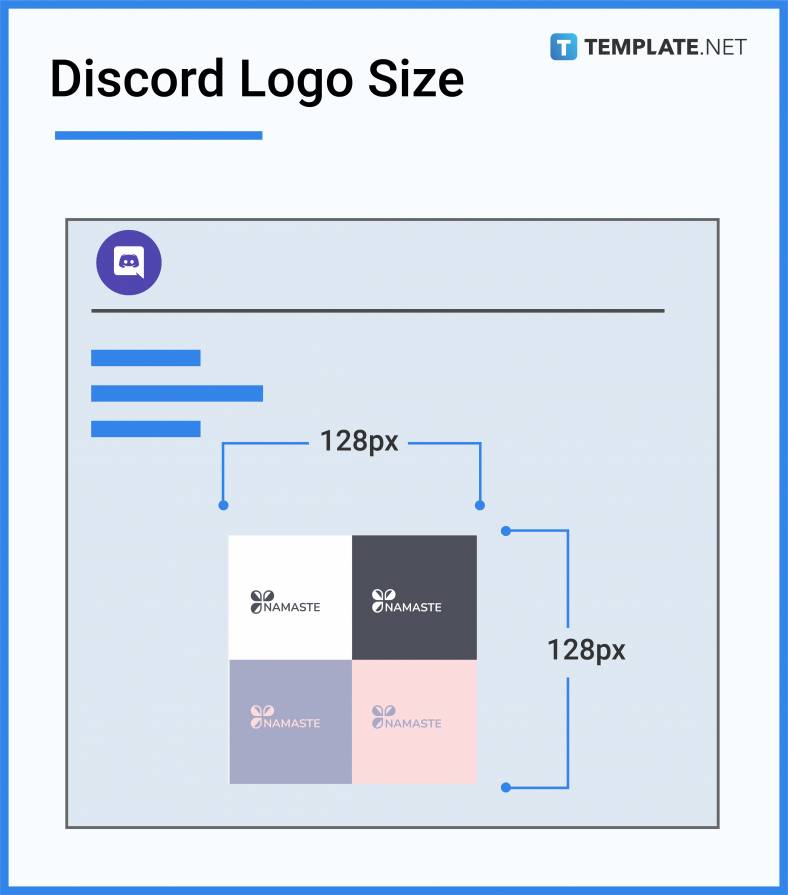
When determining the logo size for print, make sure that the image ends up looking clear and not pixelated. Since the majority of printers cover (SVG) vector files, set your logo size according to your printer’s capabilities. Examples of logo sizes for print include business cards (3.5 x 2 in), mugs (standard 11 oz mug – 7.5 x 3 in), hats (3-3.5 in wide), tote bags (standard bag – 14 x 16 in), T-shirts (maximum size 14 x 15 in or 4 ? x 5 ? in for chest pocket logos), A4: 8.3” x 11.7” letterheads (210 mm x 297 mm), and envelopes (4 ? x 9 ½ in).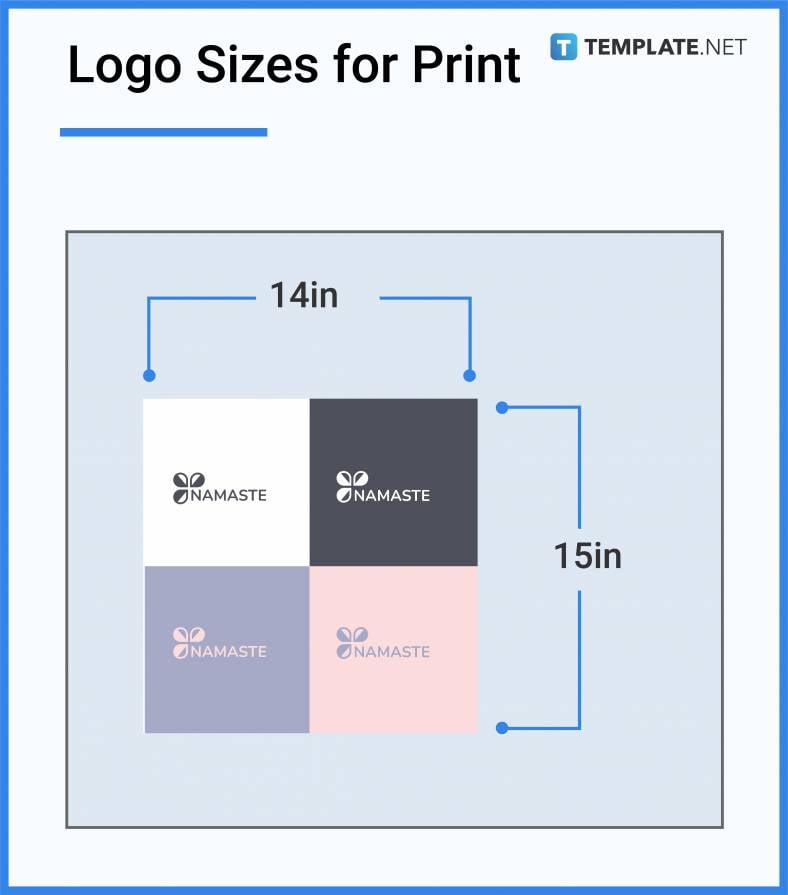
Every site you use to send or receive emails is an opportunity to make logos. Emails with logos help you market your brand to recipients. Be sure there is enough room to add a logo in every email you send. The standard logo size for email is similar to the email signature size (300 to 400px wide and 70 to 100 px high) which must not exceed 10 KB.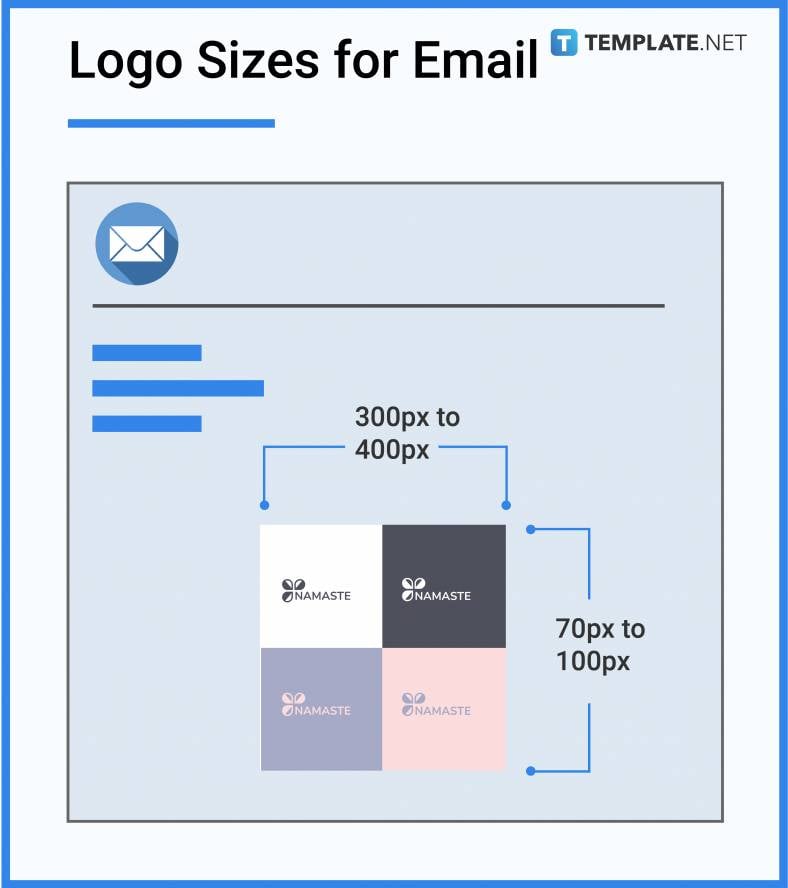
Expect variations of logo sizes when it comes to businesses, especially when there are lots of business types out there. An example from Squarespace is to use a template if you are unsure whether to go for a smaller or bigger size, such as the Bedford theme logo (100 px) in JPG, PNG, or GIF. Also, Shopify lets you choose a certain theme, including the Parallax theme logo (410 x 205 px). In WordPress, you may opt for the 250 x 45 px or 250 x 55 px for horizontal or rectangle logos.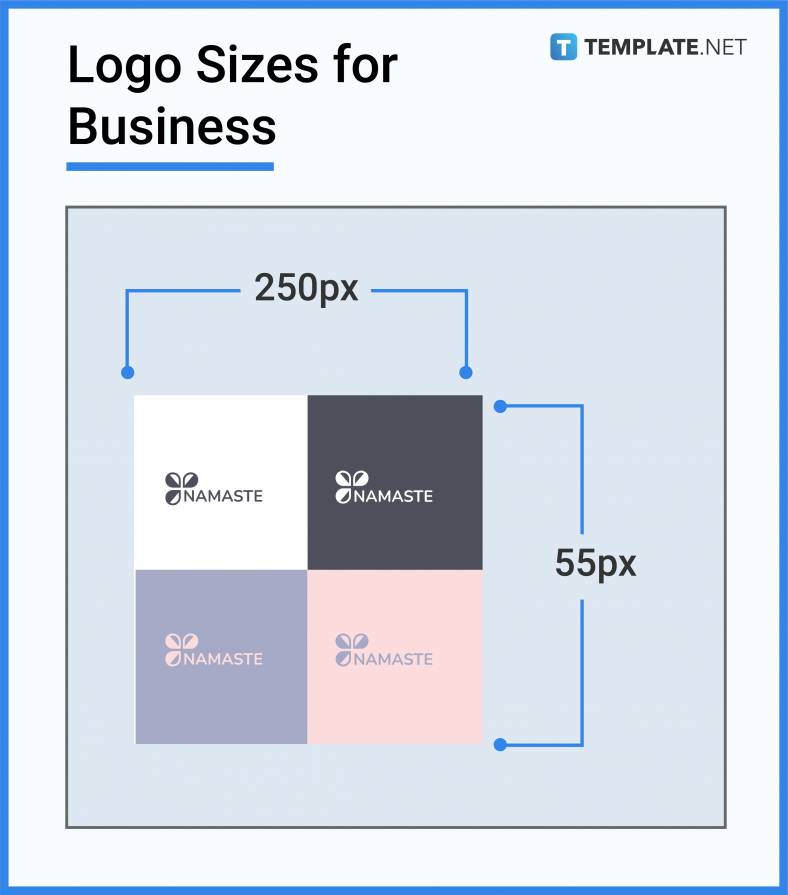
If you use Adobe Photoshop as your logo maker, you can begin with the standard 1000 x 600 px. You may also use the full 1200 x 1200 px dimensions to scale down logo pictures conveniently instead of stretching small images into bigger ones. But if you want a safe canvas size for starters, go for at least 500 x 500 px.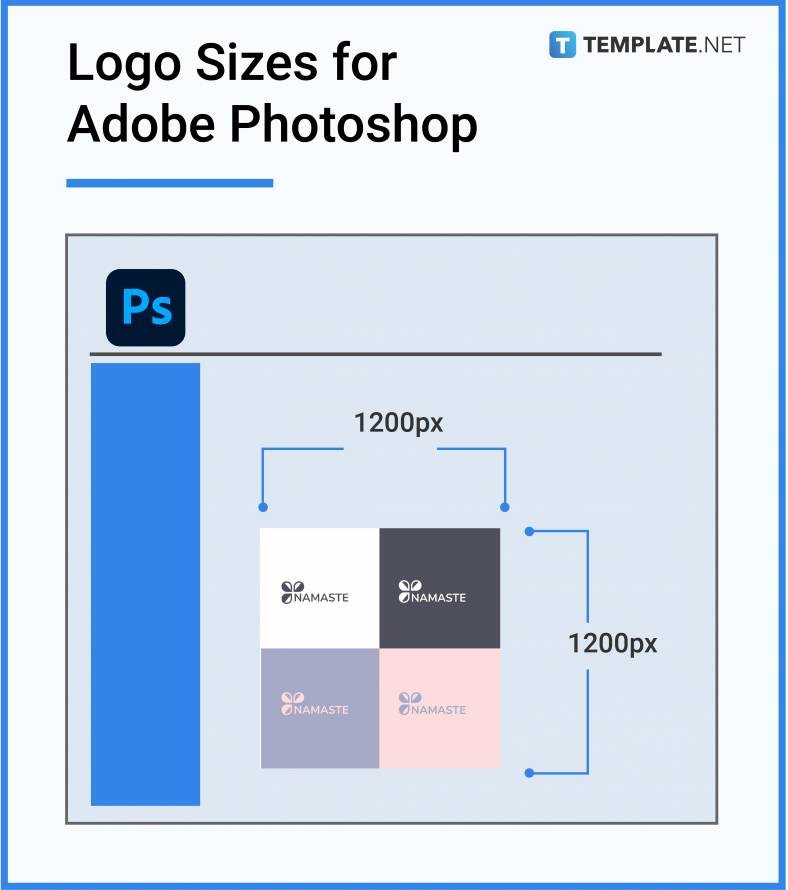
The recommended Adobe Illustrator logo sizes are 320 x 500 px. The reason for that is that such a size is compatible even with mobile screens. Also, make sure to consider the shape, orientation, and screen size. Otherwise, a logo that looks crisp on a computer might look pixelated on a smartphone.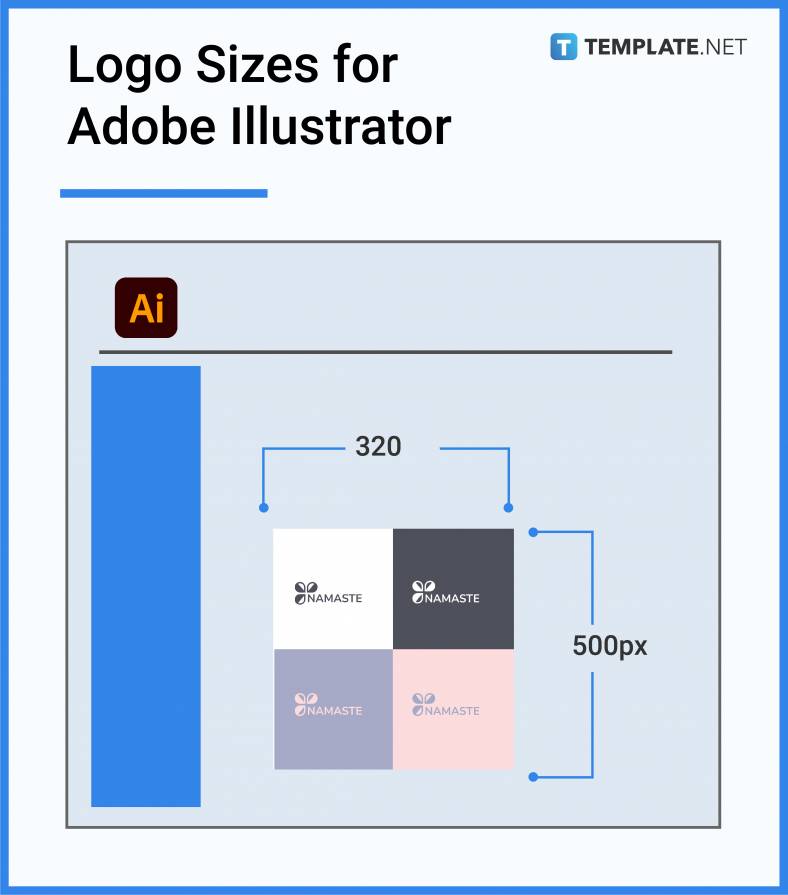
The logo size is not a one-size-fits-all situation because it depends on how to use the logo, but when it comes to the rule of thumb in online or website logo sizes, make sure the logo isn’t bigger than 320 x 70-100 px.
A good resolution for logos is to measure in DPI or dots per linear inch, specifically around 72 DPI.
There are numerous logo dimensions according to type, and you can refer to the standard logo sizes chart given above this article.
The logo sizes for print are: business cards (3.5 x 2 in), mugs (standard 11 oz mug – 7.5 x 3 in), hats (3-3.5 in wide), tote bags (standard bag – 14 x 16 in), T-shirts (maximum size 14 x 15 in or 4 ? x 5 ? in for chest pocket logos), A4: 8.3” x 11.7” letterheads (210 mm x 297 mm), and envelopes (4 ? x 9 ½ in).
On social media, logo dimensions are around 250 x 250 px up to 720 x 720 px, with a maximum file size of 5 MB.
In Adobe Illustrator, follow the recommended logo size of 320 x 500 px.
In Adobe Photoshop, you can use logo sizes of 1000 x 600 px, 1200 x 1200 px, and 500 x 500 px.
Whether logo sizes in websites are placed in the upper left, upper right, lower left, or any other placement, the normal size is 250 x 100 px, the horizontal size is 400 x 100 px, and the vertical size is 160 x 160 px.
Logo sizes are measured in pixels, inches, centimeters, and millimeters; they are either vector files or CSS images in vertical or horizontal orientation, with variations in logo sizes, colors, and types.
Refer to the chart above and decide the logo size according to how or where you wish to use the logo because, for example, it’s never advisable to use the same logo size for a tote bag and on Facebook.
![How To Make/Create an Invitation in Google Docs [Templates + Examples]](https://images.template.net/wp-content/uploads/2023/07/How-To-Make_Create-an-Invitation-in-Google-Docs-Templates-Examples-788x443.png)
To formally invite someone or a group of people to an event or activity, you will need to send out…
![How To Create an ID Card in Google Docs [Template + Example]](https://images.template.net/wp-content/uploads/2023/07/How-To-Create-an-ID-Card-in-Google-Docs-Template-Example-788x443.png)
ID cards are used as a way to represent an individual to the company or organization they work or volunteer…
![How to Make an ID Card in Microsoft Word [Template + Example]](https://images.template.net/wp-content/uploads/2023/07/How-to-Make-an-ID-Card-in-Microsoft-Word-Template-Example-788x443.png)
ID cards are an essential part of any employee working for a company or an organization to be recognized as…
![How To Make/Create a Book Cover in Google Docs [Templates + Examples]](https://images.template.net/wp-content/uploads/2023/07/How-To-Create-a-Book-Cover-in-Google-Docs-788x443.png)
Aside from protecting a book, book covers are specifically designed to attract readers and convey the essence of the book.…
![How To Make/Create a Book Cover in Microsoft Word [Templates + Examples]](https://images.template.net/wp-content/uploads/2023/07/How-To-Create-a-Book-Cover-in-Microsoft-Word-788x443.png)
A book cover is the outer layer of a book that is used to protect its contents. Book covers are…
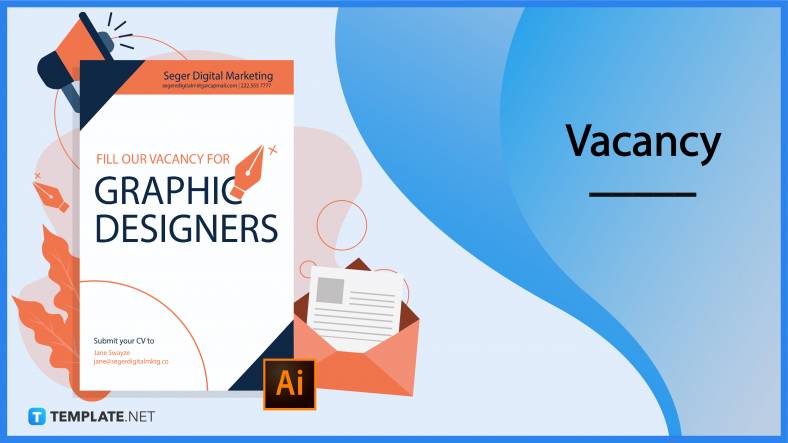
Job vacancy is a common scenario in companies and organizations. Employees leave for all kinds of reasons and when they…
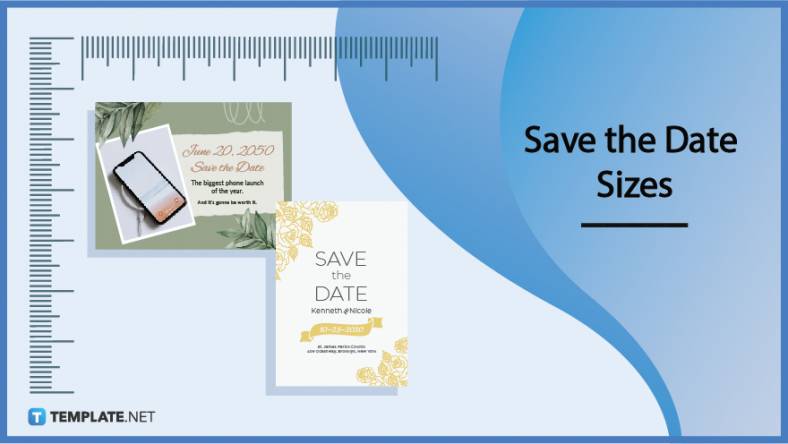
Save the date sizes are usually the same size as a formal invitation. But there are a number of different…
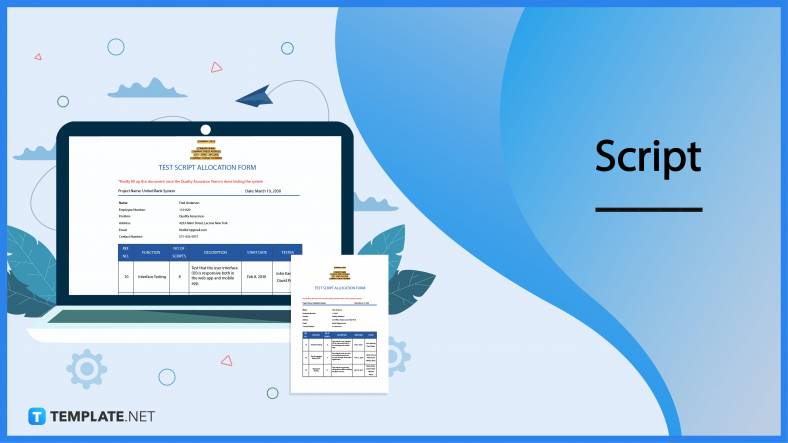
Script is a popular word that is frequently used in the entertainment world. There are a variety of areas and usages…
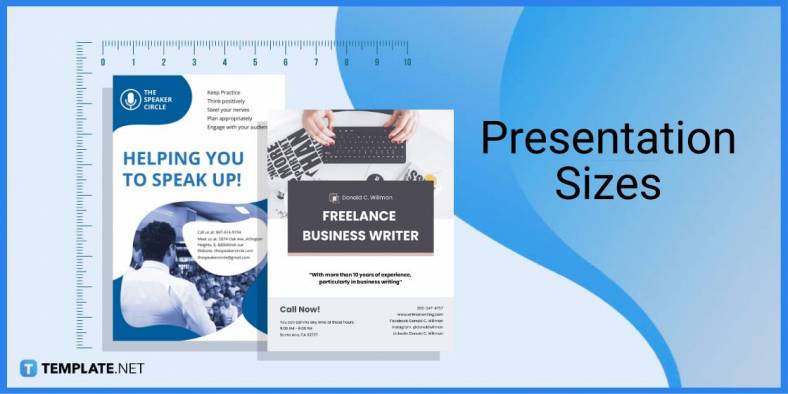
Presentations may not look as pleasant as how you design them with pictures, animations, videos, and other graphic designs without…